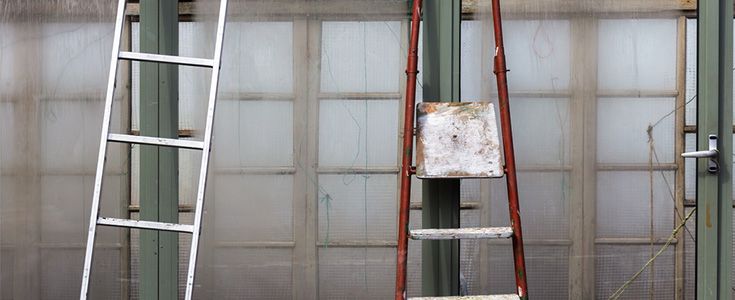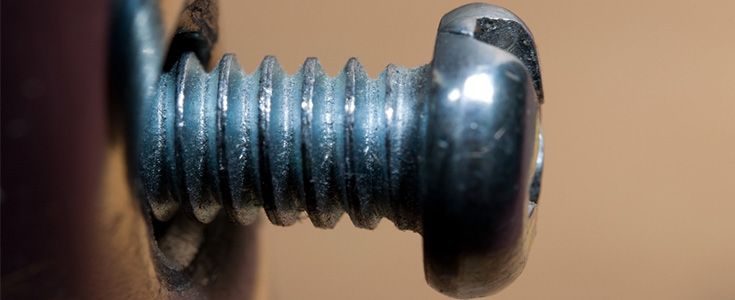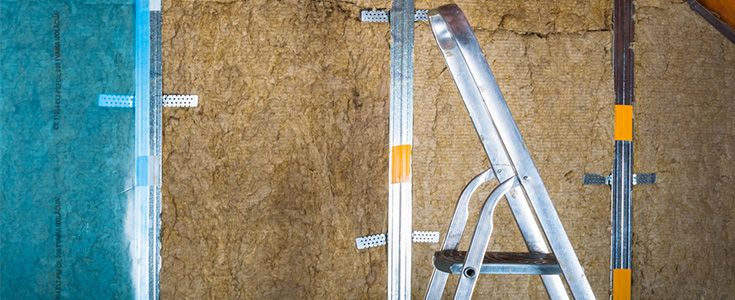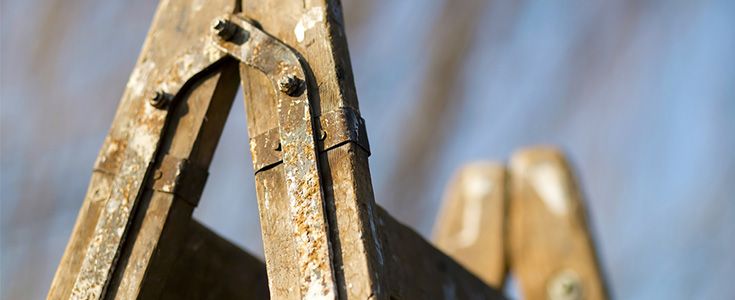Quick Checks Before Using Your Ladders – Series 2
19/05/2017
In the second and final instalment in our series about home ladder inspections, we’re running you through some quick things to check each time you use your ladder including things like protruding screws, loose parts, dirt and manufacture defects.
Though professional, detailed inspections should be carried out every six months or so, you should never assume the integrity of a ladder before you use it, so it’s vital to do your own checks before you place so much as a foot on it.
Sharp Nails And Other Protrusions

Because of their size, these are one of the easiest things to miss when checking over a ladder, but still amongst the most important. Check the ladder’s rungs and railings for any sharp edges, or things sticking out. This includes splinters on wooden ladders, rough surfaces, or protruding nails or screws. While these can be painful at the best of times on door frames and the like, they can be downright dangerous on a ladder – if you’re halfway up a step ladder and you put your full weight on a jutting nail or screw, not only do you risk driving it straight through your foot, but also very easily falling from the ladder. It might sound like an over-the-top scenario, but it’s a very real and plausible risk. The relative unlikeliness of an accident is never any comfort to the person who’s just been involved in one! Not only can they harm you by themselves, but rusty or sharp screws or surfaces could even infect the injury, so be extra careful.
Loose Screws

Meanwhile, speaking of loose screws, make sure that there are no missing or loose parts from the workings of the ladder itself. This is especially true of roof ladders and other metal variants. Your safety is utterly dependent on every part of your ladder working flawlessly. Never use one that looks like it’s missing so much as a single screw – it could make all the difference to the ladder collapsing from under you.
Material Concerns

There are a couple of different types of ladder materials; including wood ladders to metal ladders, and even fibreglass variants. Though each have their advantages and disadvantages – which we’ve covered before on the blog – it also makes them potentially vulnerable to different faults:
- Wooden ladders need to be checked for rot, dampness or decay, all of which can damage the ladder’s structural integrity.
- Metal ladders must be free of dents or bent railings or surfaces, and all their parts need to be sufficiently lubricated. On a similar note, make sure to check for corrosion, rust or oxidisation.
- Fibreglass ladders, meanwhile, need to be free of cracks or exposed fibreglass, with all rungs and railings completely intact.
Dirty Is Dangerous

Finally, whatever your ladder’s material, always make sure that it’s completely free of dirt and grime. Both can potentially both mask serious cracks or damage, which makes keeping your ladder clean a vital part of practising good ladder safety.
We said it in last week’s blog, but it bears saying again – never take your chances with a defective ladder. It’s possible you’ll sustain injuries that have the potential to change your life, and no one wants you to become one of the many safety statistics published each year. As well as performing your own regular quick checks, always make sure that you get your ladder inspected twice annually by a fully qualified professional, to minimise the possibility of any risks.
At Browns Safety Services, we specialise in performing such ladder inspections. You can click the link to find out more information, or book today by calling us on 01282 615517.
Don’t forget to follow us on Twitter: @brownsladders